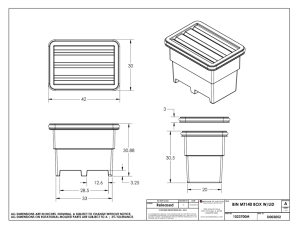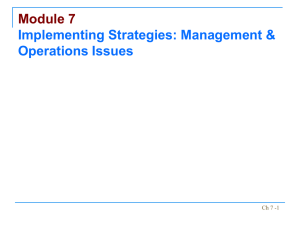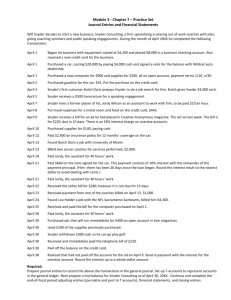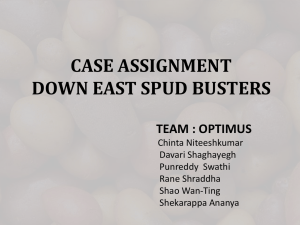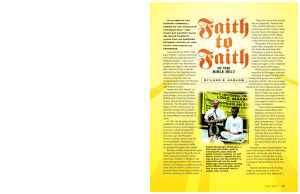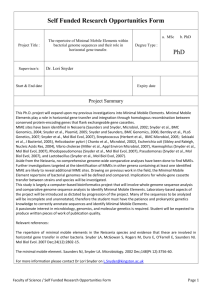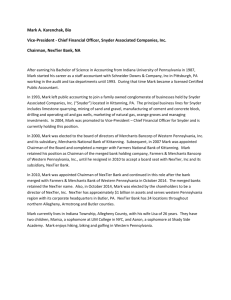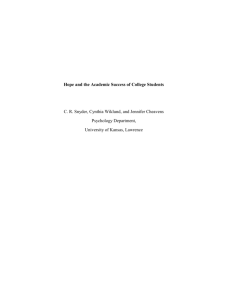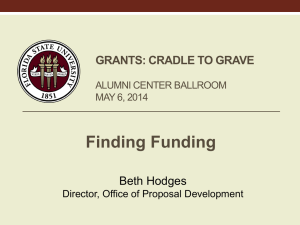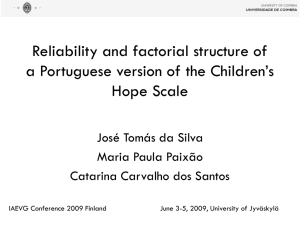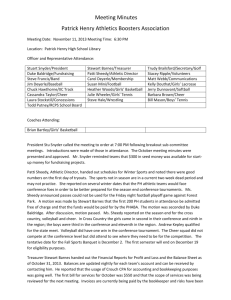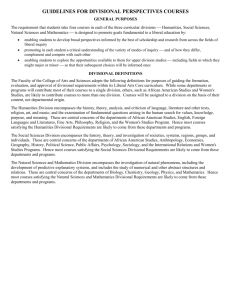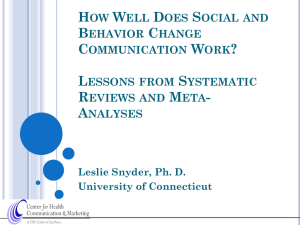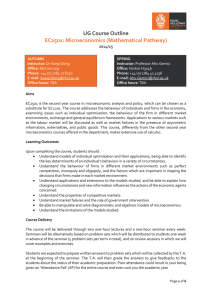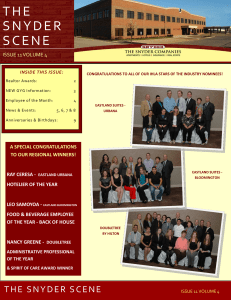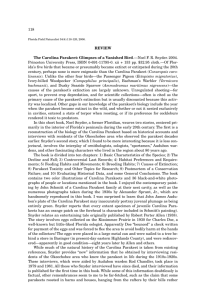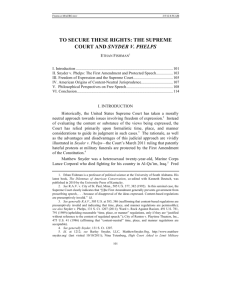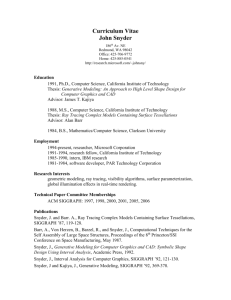February - Frostburg State University
advertisement
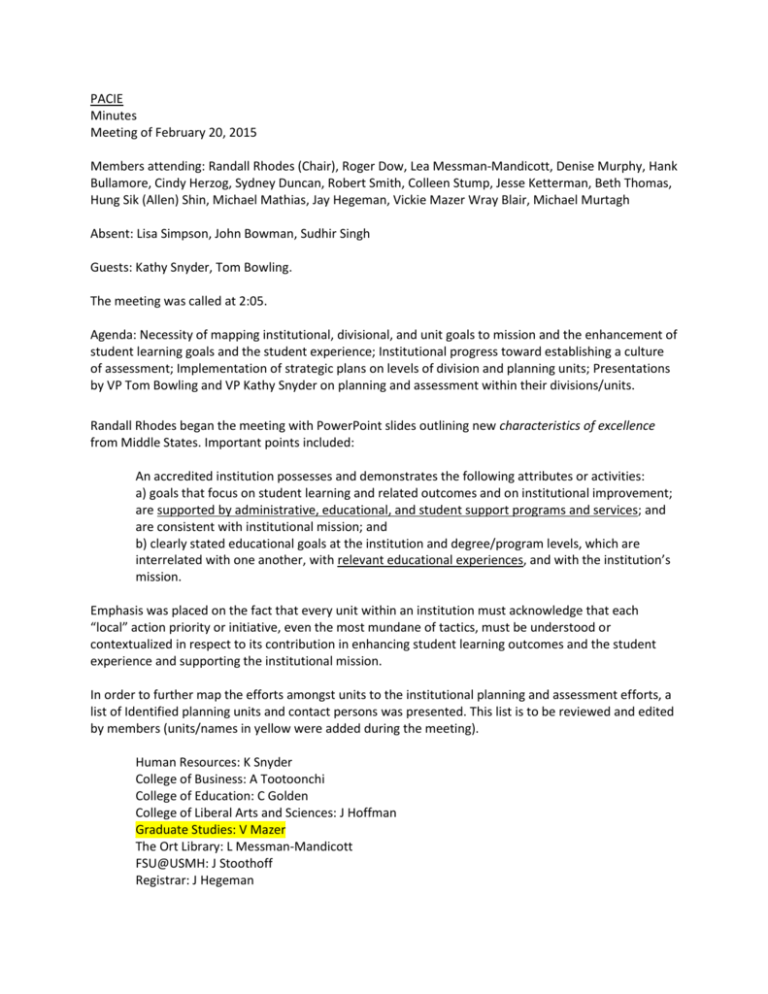
PACIE Minutes Meeting of February 20, 2015 Members attending: Randall Rhodes (Chair), Roger Dow, Lea Messman-Mandicott, Denise Murphy, Hank Bullamore, Cindy Herzog, Sydney Duncan, Robert Smith, Colleen Stump, Jesse Ketterman, Beth Thomas, Hung Sik (Allen) Shin, Michael Mathias, Jay Hegeman, Vickie Mazer Wray Blair, Michael Murtagh Absent: Lisa Simpson, John Bowman, Sudhir Singh Guests: Kathy Snyder, Tom Bowling. The meeting was called at 2:05. Agenda: Necessity of mapping institutional, divisional, and unit goals to mission and the enhancement of student learning goals and the student experience; Institutional progress toward establishing a culture of assessment; Implementation of strategic plans on levels of division and planning units; Presentations by VP Tom Bowling and VP Kathy Snyder on planning and assessment within their divisions/units. Randall Rhodes began the meeting with PowerPoint slides outlining new characteristics of excellence from Middle States. Important points included: An accredited institution possesses and demonstrates the following attributes or activities: a) goals that focus on student learning and related outcomes and on institutional improvement; are supported by administrative, educational, and student support programs and services; and are consistent with institutional mission; and b) clearly stated educational goals at the institution and degree/program levels, which are interrelated with one another, with relevant educational experiences, and with the institution’s mission. Emphasis was placed on the fact that every unit within an institution must acknowledge that each “local” action priority or initiative, even the most mundane of tactics, must be understood or contextualized in respect to its contribution in enhancing student learning outcomes and the student experience and supporting the institutional mission. In order to further map the efforts amongst units to the institutional planning and assessment efforts, a list of Identified planning units and contact persons was presented. This list is to be reviewed and edited by members (units/names in yellow were added during the meeting). Human Resources: K Snyder College of Business: A Tootoonchi College of Education: C Golden College of Liberal Arts and Sciences: J Hoffman Graduate Studies: V Mazer The Ort Library: L Messman-Mandicott FSU@USMH: J Stoothoff Registrar: J Hegeman Academic Success Network: J Hegeman Admissions/Financial Aid: W Blair Planning, Assessment and Institutional Research: R Smith Student Conduct: J Ketterman Student Wellness: A Baer Diversity Center: R Wynder Alcohol Education: J Graham Career Services: R Cordle Student Development: A Shimko Counseling and Psychological Services: S Deakin Student and Community Involvement: W Mandicott Student Activities and Greek Life: R Cooper Cultural Events: M Plummer Residence Life: D Severance Health Services: D Smith Civic Engagement: P O’Brien Leadership and Experiential Learning: D Baer Veterans Services: D Dabrowski Athletics: T Dell Budget: D Murphy Facilities: B Boyce Finance: R Repac Technology: T Donoway Payroll: P Shirk Alumni Programs: L McCullough Communications and Media: C Stump FSU Foundation: A White General Counsel: K Treber Title IX: E Caputo University Police: C Smith Kathy Snyder, VP for Human Resources Due to the state and federal reporting obligations of the unit, HR has been collecting and analyzing data for decades. The unit has also been accountable in its use of resources, fiscal and human. The budget is mostly dedicated to the process of recruitment of faculty and staff. Initiatives that require varying amounts of resources include Trakstar, online onboarding, software expenses, employee appreciation day, and new employee events. Much of the employee development workshops are funded (in whole or in part) by either an FSU Foundation grant or HR’s Foundation account (funded by donations from HR employees). As a unit, employees set ten departmental goals that are all linked to institutional goal 4. Each employee serves as a reporter/contact person for unit goal(s). Progress is tracked in an excel template and updated monthly. In respect to the unit’s role in enhancing the mission, HR’s recruitment efforts in assisting search committees in hiring the “right people” clearly supports student learning and the student experience. HR’s efforts on behalf of employee issues, trainings, labor relations, and the writing and processing of contracts, support faculty and staff. Tom Bowling, VP for Student Affairs Over the years, various initiatives within Student Affairs have facilitated assessment efforts. For example, the NCHIP project used the PDSA model. While assessments have been tied to resource allocation, there has not been a systematic process across the whole division. Examples of the redirection of resources most notably in the assignment of vacant positions to units in immediate need include an administrative reorganization that resulted in a full-time veteran coordinator, and the hiring of doctoral interns in the Counseling Center. It is important to be agile in response to changes in issues and opportunities, including taking advantage of the Drug Free Communities Grant. In respect to the unit’s/division’s role in enhancing the mission, Student Affairs has developed a student survey schedule to gauge customer satisfaction on the student experience. Also, the leadership competency model, promoted by Dr. Jeff McClellan, provides a framework for the assessment of cocurricular activities and the measurement of student outcomes, mostly in the mastery of competencies. Additional initiatives are in the areas of student professional identity, student well-being, and student engagement. While it is not possible to measure the direct impact initiatives have on student retention, it is possible to measure their impact on student engagement which is the best proxy for retention. Attention will remain focused on first-year students with ORIE as a vehicle for the instruction on dispositions that ensure a high rate of student success. It is important to note that with an increasing population of transfers, many students bypass ORIE. The division is in the process of completing its strategic plan; each unit will have its own strategic plan that maps to the divisional and institutional plans. These plans will map to all 6 institutional plan goals. All will be uploaded into Compliance Assist. Three documents were distributed: Divisional assessment cycle (3 year cycle) Strategic Planning Timeline for September 2014-August 2015 (updated 2/12/15) Aligning Co-Curricular Initiatives with Learning Outcomes (excerpt from The Advisory Board Company, 2011) The agenda for the spring semester meetings of PACIE will continue on March 27 with conversations with Bill Childs, Dave Rose, and John Short on institutional effectiveness and planning within their divisions. At the April meeting, there will be a tutorial on submitting year-end reports and an update on the progress of the Middle States Self-Study. Meeting adjourned at 3:00.
